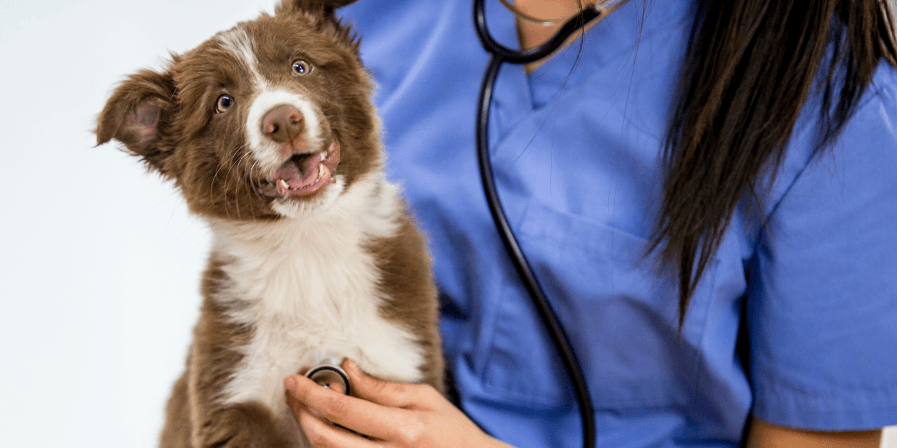Dog Spay Surgery

When you welcome a female dog into your home, you're not just gaining a loyal companion—you’re also accepting responsibility for her health and wellbeing. One critical health decision you'll face is whether to spay her. Spay surgery is a common veterinary procedure that can improve your pet’s quality of life and prevent unwanted litters. In this blog, we’ll walk you through everything you need to know about dog spay surgery—from the basics to the benefits, costs, and aftercare.
What Is Dog Spay Surgery?
Spay surgery, medically known as an ovariohysterectomy, is a procedure where a female dog’s ovaries and uterus are surgically removed. This not only prevents her from becoming pregnant but also puts a stop to her heat cycles. It’s a routine operation that we at DCC Animal Hospital perform with the utmost precision and care, using modern equipment and safe anesthesia practices. For pet parents, the decision to spay can bring peace of mind, knowing your dog won’t go through uncomfortable heat cycles or face the risk of unexpected pregnancies.
Anatomy of the Female Reproductive System in Dogs
To truly understand why spay surgery is performed, it helps to know how the female reproductive system works in dogs. A female dog’s reproductive system consists primarily of the ovaries, fallopian tubes, uterine horns, uterine body, cervix, and vagina. The ovaries are small, almond-shaped organs that produce eggs and secrete hormones such as estrogen and progesterone. These hormones are responsible for triggering the heat cycle and are also linked to behaviors like restlessness, mounting, and attracting male dogs.
Once released from the ovaries, the eggs travel through the fallopian tubes and can be fertilized in the uterus if the dog mates during her heat cycle. The uterus itself is Y-shaped in dogs, made up of two long uterine horns that extend toward the ovaries, and a central uterine body where pregnancy develops. The cervix serves as a gateway between the uterus and the vagina and remains tightly closed unless the dog is in labor.
During spay surgery, both the ovaries and the uterus are removed, thereby eliminating the heat cycle and any chance of pregnancy. Just as importantly, this surgical removal also prevents diseases that are influenced by reproductive hormones or involve the uterus itself.
Why Would a Dog Need Spay Surgery?
There are several reasons to consider spaying your dog, beyond just the inability to have puppies. One of the most compelling reasons is the prevention of pyometra, a serious and often fatal infection of the uterus that typically affects older unspayed dogs. Spaying eliminates this risk entirely. Another key reason is the prevention of mammary tumors, which have a much higher incidence in dogs that are not spayed early in life. The risk increases with each heat cycle that passes without surgery.
Behavioral benefits also come into play. During a heat cycle, dogs can display restlessness, increased vocalization, and a tendency to escape in search of mates—behaviors that can be stressful for both the pet and the family. Spaying helps regulate these behaviors, often resulting in a calmer, more predictable temperament. Lastly, spaying plays a role in the larger picture of responsible pet ownership. Reducing accidental litters helps ease the burden on shelters and prevents the hardship faced by stray animals.
Benefits of Dog Spay Surgery
Spaying provides long-term health and behavioral benefits for female dogs. Medically, it protects against reproductive cancers and infections, giving your pet a much better chance at a healthy, long life. It also prevents the physical strain and risks associated with pregnancy and delivery.
From a behavioral standpoint, spayed dogs no longer experience hormone-driven behaviors like roaming, mounting, or mood swings during heat cycles. This often makes for a more stable and manageable household environment. Spaying also contributes to better public health by helping control stray populations. With fewer unplanned litters, there are fewer animals left without homes or proper care.
Cost of Dog Spay Surgery
The cost of spay surgery can vary depending on several factors, including the dog’s age, breed, size, overall health, and the location of the veterinary practice. In some cases, dogs in heat, overweight, or older may require more advanced monitoring and care, which could affect the overall expense.
While the upfront cost may seem like a commitment, it's important to see spaying as an investment in preventive healthcare. The long-term savings—from avoiding emergency treatments for infections, pregnancies, or cancers—often far outweigh the one-time surgical cost.
Veterinary clinics often offer customized care plans that include consultation, diagnostics, anesthesia, surgery, pain management, and post-operative support. It’s best to speak directly with your vet to understand the breakdown of services and what’s best suited for your pet.
Preparation for Dog Spay Surgery
Preparing your dog for surgery involves a few simple steps, all aimed at making the procedure as safe and stress-free as possible.
Before surgery day, your vet may recommend a physical examination and blood tests, especially if your dog is older or has underlying conditions. These evaluations help determine if she’s fit for anesthesia and whether any adjustments are needed in the surgical approach.
Typically, dogs are asked to fast for several hours before surgery. This means no food the night before, and sometimes water is restricted just a few hours prior. On the day of the procedure, a calm and quiet environment helps keep your dog relaxed before heading to the clinic.
Being well-informed about what to expect can help ease your nerves as well. Many veterinarians encourage pet parents to ask questions and be involved in every step of the process.
Complications of Dog Spay Surgery
While spaying is a routine procedure, it is still a major surgery, and like all surgeries, there is a small risk of complications. Some of the most common minor side effects include temporary grogginess, soreness around the incision site, and reduced appetite in the first 24 to 48 hours.
More serious complications—though rare—may include internal bleeding, infections, or reactions to anesthesia. These risks are typically minimized by thorough pre-surgical screenings and post-operative monitoring.
Most dogs recover without incident, especially when care instructions are followed closely. It’s important to watch for signs such as unusual swelling, discharge from the incision, fever, or prolonged lethargy. If anything seems unusual, reaching out to your vet promptly can make all the difference.
Post-Op Care and Recovery for Dog Spay Surgery
The first few days after spay surgery are crucial for healing. Your dog may be sleepy or mildly disoriented due to the effects of anesthesia. Providing her with a quiet, cozy space to rest can help her feel safe and supported.
It’s important to restrict physical activity for at least 10 to 14 days after surgery. Running, jumping, or climbing stairs should be avoided to prevent strain on the surgical site. A cone collar or protective garment may be needed to stop your dog from licking or biting the incision.
You’ll likely be sent home with pain medications and clear instructions for monitoring the incision and giving post-op care. Most dogs recover remarkably well with gentle care, and many are back to their normal selves within a week.
Alternatives to Dog Spay Surgery
There are situations where spaying may not be the right choice for every pet or family. For instance, pet parents interested in future breeding may delay the surgery, or some dogs may have health conditions that make anesthesia risky.
Alternatives such as hormonal injections or implants can offer temporary birth control, but they often come with side effects and do not reduce the risk of reproductive diseases. Surgical alternatives like tubal ligation may prevent pregnancy but leave the dog’s hormone cycles—and related health risks—intact.
It’s essential to consult a trusted veterinarian to explore these alternatives in detail. Each dog is different, and decisions should be based on age, health, lifestyle, and your long-term goals for her care.
Conclusion
Spaying your dog is a proactive, loving decision that supports her long-term health and your peace of mind. It helps reduce the risk of serious illnesses, stabilizes behavior, and plays a vital role in responsible pet ownership.
If you’re considering spay surgery and want expert guidance, compassionate care, and dedicated support—reach out to DCC Animal Hospital. Our veterinary professionals are here to help you make the best choice for your pet, every step of the way.
FAQs
1. At what age should I spay my dog?
Most veterinarians recommend spaying between 6 to 9 months of age, ideally before the first heat cycle. However, this can vary based on breed and health status, so it’s best to consult your vet.
2. Will my dog’s personality change after spay surgery?
Spaying does not change your dog’s core personality. It may reduce hormone-driven behaviors like roaming or excessive barking during heat, but your dog will remain the loving companion you know.


 How can we help?
How can we help?